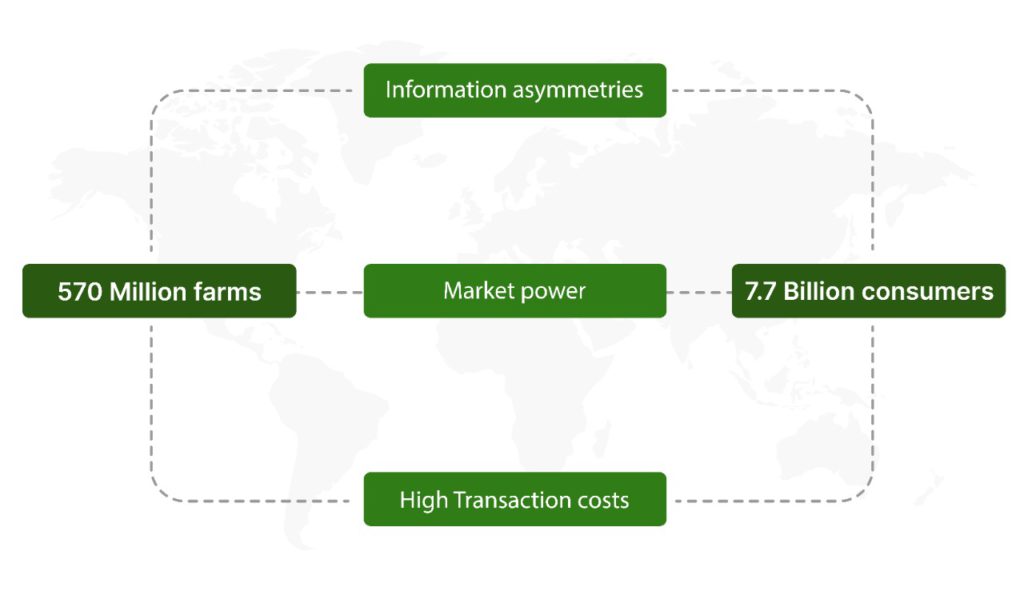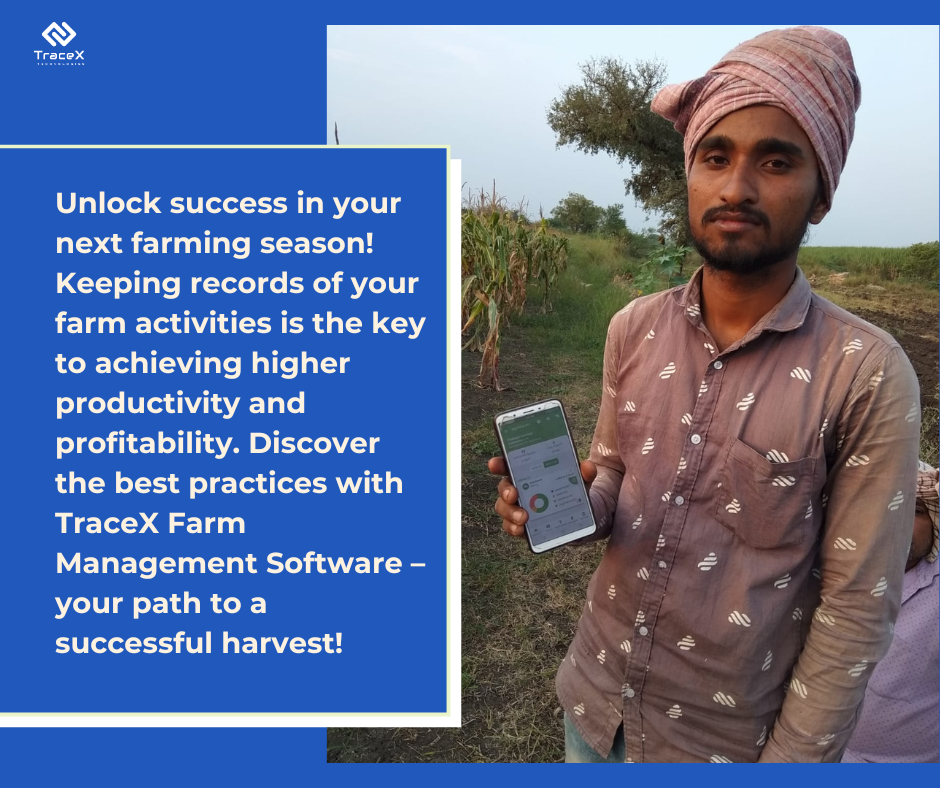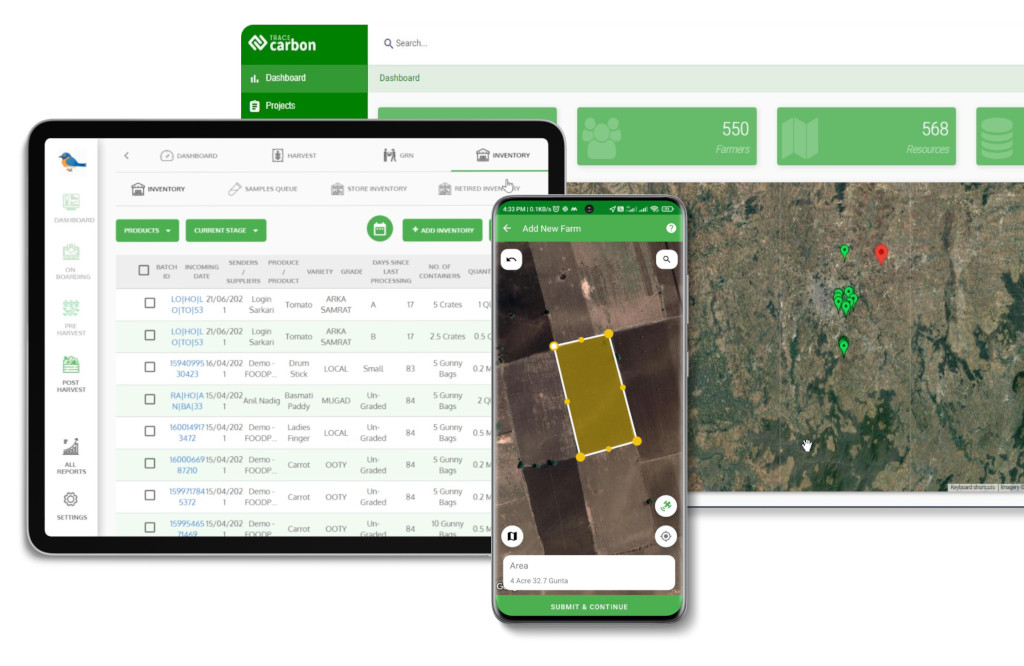Contact: +91 99725 24322 |
Menu
Menu
Quick summary: Explore the top-notch farm management practices that can elevate your agricultural operations. Discover innovative strategies, technological solutions, and sustainable approaches to optimize your farm's productivity. Learn the best practices for efficient crop management, resource utilization, and overall agribusiness success. Dive into our blog for a comprehensive guide on enhancing your farm management skills.

The key towards efficient and sustainable agriculture is adopting best Farm Management Practices. Whether you’re a seasoned farmer or a novice in the field, these practices are essential for cultivating success in modern agriculture. Agriculture accumulates about 11% of a total agricultural area of five billion hectares which is about 38% of the land available. Only a part of which is used for cultivation, while the rest is occupied by livestock, irrigation and management practices. Given the rate at which the population is growing, limited resources must be used effectively and sustainably to meet human and other food demands.
According to WRI, there will be nearly 10 billion people on Earth by 2050—about 3 billion more mouths to feed than there were in 2010.
Uncover invaluable insights into optimizing productivity, ensuring sustainability, and maximizing yields. Join us in revolutionizing farm management for a thriving and sustainable future.
It is a management strategy for organizing and implementing agricultural decisions, such as those involving livestock, crops, aquaculture, agroforestry, etc., to maximize output and profitability. It allocates resources, develops strategies, and plans operations to ensure profitable, sustainable, and productive farming.
“Farm management is concerned with the organization of resources, with planning their use, both within and between enterprises, and with the control of plans both during their implementation and afterwards”
Farm Management can be exhaustive and expensive. The rising demand for food production to feed the growing population has increased the pressure among growers. Implementation of smart farm management strategies should optimize productivity and drive maximum profits for agri-businesses.
Farm management provides the perfect system where in all activities of farming are well organized along with its optimum utilization of resources for bigger profits and less cost.
Traditionally, farmers have leaned on personal experience, local wisdom, and occasional expert consultations to guide decisions. However, navigating modern challenges like stringent regulations, labor shortages, and climate change requires more than traditional knowledge. While some farmers use digital tools, many still rely on manual record-keeping and lack efficient planning and monitoring capabilities. The solution? A centralized digital platform empowering farmers to manage all aspects of their operations efficiently, providing real-time insights for a streamlined production process
Agriculture accumulates about 11% of a total agricultural area of five billion hectares which is about 38% of the land available. Only a part of which is used for cultivation, while the rest is occupied by livestock, irrigation and management practices. Given the rate at which the population is growing, limited resources must be used effectively and sustainably to meet human and other food demands.
Crop production refers to the crop grown for both human consumption and commercial use, and hence crop management refers to all those processes that help grow a better crop. Every input a farmer makes, such as soil, seed, manure, fertilizer, water, harvesting, and storage, can be optimized.
A few of its practices are
Today, there is a rapid increase in demand for food in the global market, which has created issues of safety, quality and increased wastage. In such conditions, agricultural enterprises are forced to innovate and improve their efficiency. By using a consistent crop and soil management system, the farm’s agricultural production system will become more robust, and crop yields will be more sustainably produced. Thus crop production and management system will help agriculture to be profitable along with managing the input costs.

There are various aspects for a quality crop to be cultivated, and one of the important contributing factors is soil management or seedbed preparation. Crops are in direct contact with the soil, making them one of the sources of plant nutrition. Therefore, before the seed is sown, the soil is brought to its best condition through processes like tilling, levelling, digging, fertilizing, improving, etc. All such processes make the soil hold more moisture, maintain seeding depth, kill weeds, help germination, oxidation, ensures proper space and sunlight. Therefore, a proper seedbed can optimize seed germination and crop survival rate.
Ploughing or tilling is a process of turning the soil around in its place manually with tools or machinery. This makes the seed come in direct contact with the soil and creates space for roots to grow deep. In the modern sustainable agriculture practice, there has been reduced tillage or no tillage which prevents soil erosion and creates an accumulation of carbon which improves the quality of yield in the long run.
The process or journey that the seed takes to develop into a spore is known as seed germination. A seed that is ready to sow, contains an embryo, which breaks out of the shell to form a crop when the right conditions are met. Every seed type has its environmental requirement, they are based on temperature, moisture, light and air.
Every seed has its minimum and maximum temperature at which the seed can effectively germinate, failing to which can put the seed into dormancy. The same is applied to the moisture content of the soil. Research has shown that germination occurs at a maximum of 60% to a minimum of 25% moisture content.
Aeration or oxidation is the process of providing proper air to the seed to breathe and germinate. If the soil is too compact or is overfilled with water, the carbon dioxide released might suffocate the seed, affecting germination.
Sunlight requirements vary depending on the seed type and its requirements.
Discover the crucial role quality seeds play in transforming agricultural landscapes.
Understand how investing in superior seeds leads to higher yields, improved crop resilience, and sustainable farming practices.
Explore our blog
Any substance, may it be natural or chemical which is added to the soil to increase its fertility is known as fertilizer. These are substances that help plants grow better, it includes nitrogen, phosphorous and potassium (NPK) which are vital for plants’ growth. They come in various chemical formulas depending on nutritional and plant needs.
Naturally occurring or organic fertilizers include manure, slurry, animal waste, worm castings (vermicompost), meat processing wastes, seaweed, rock phosphate, plant/green compost, biosolids, etc. manure increases the water holding capacity of the soil, improves texture and enhances friendly microbes and nutrients.
Therefore the balance of providing the right amount of nutrition to the right plant by the right means becomes vital.
Irrigation refers to the flow/supply of water by artificial means to help plants grow. Today, with the help of technology, data regarding the amount of water to be supplied at any stage of cultivation is readily available. Reduced water would result in under-growth of the plant and excessive water leads to soil erosion and washes away fertilizers and nutrients away from the soil.
As both soil and crops require sufficient amounts of water for absorption and germination, water supply becomes critical. Hence modern methods of irrigation including sprinkler systems, drip irrigation, subsurface waterlines, cloud-automated, etc. have optimally helped efficient utilization of water.
Preserving the Lifeline: Exploring Water Conservation in Agriculture
Unravel the significance of water conservation for sustainable agriculture.
Dive into our insightful blog
The process of cutting crops when mature is known as harvesting. Harvest mainly depends on the time of crops maturity along with various other factors like moisture, weather condition, etc. Conventionally, it was manually performed by hand or with the help of a sickle but today the use of harvest machines has become normal. Multipurpose machines which can harvest, thresh and winnow in one go are available. Harvesting is a delicate and observational process, as it includes both favourable and undesirable crops.
The process of threshing involves pounding or using a threshing machine to separate grains from the harvested crops. Winnowing is the method of separating the chaff from the grains.
Post-harvest includes the management of both seeds and crop harvest. Seeds are stored in moisture-free containers free from pests, microorganisms, bacteria and fungi, which might harm further germination.
The harvest is sent to direct consumption or further processing while maintaining proper storage and the right temperature.
Technology solutions have become the bedrock of modern farm management. From precision farming and IoT-enabled sensors to data analytics and blockchain traceability, these innovations empower farmers with real-time insights, optimizing crop yields, resource utilization, and sustainability. Unlock the potential of smart agriculture, streamline operations, and cultivate a more resilient, tech-driven future for the farming community.

TraceX Farm Management Software stands at the forefront of agricultural innovation, providing a comprehensive solution to empower farmers in their daily operations. Leveraging advanced technologies like blockchain, IoT, and data analytics, TraceX enables farmers to efficiently plan, monitor, and analyze every facet of their farming activities. From crop management and pest control to resource optimization and compliance tracking, the platform offers a centralized digital hub for farmers to make informed decisions. With real-time insights, precision farming practices, and streamlined operations, TraceX contributes to sustainable agriculture, helping farmers navigate challenges and cultivate a more efficient and resilient farming ecosystem.
TraceX farm management solutions helps farmers to realize better productivity and efficiency. The farmers are able to manage various strategies that are required to keep a farm productive, beneficial and economical. They are able to track the best practices and schedule harvest plans with automated workflows. Blockchain technology assures the farmers end to end visibility of their supply chains ensuring quality and credible product.
Conclusion
The need for a farm management system is a necessity to cope with the rising demand for food. While volumes of global trade are increasing, there are a lot of economic requirements such as quality, safety, sustainability, etc. Such stringent guidelines have made the way for technological advancements concerning machinery, data collection and farming techniques which as lifted the farming industry to become more efficient and sustainable.
